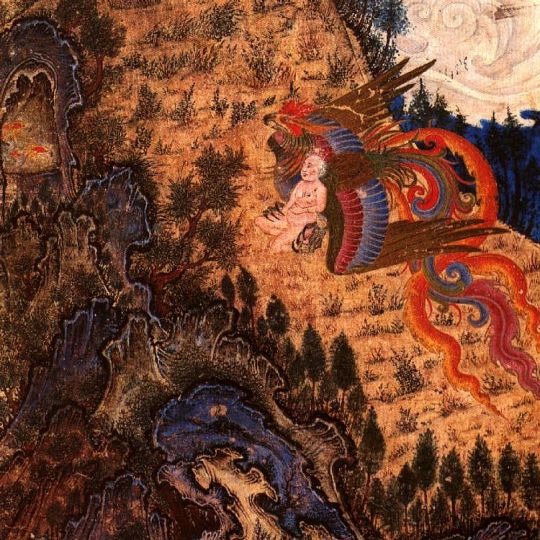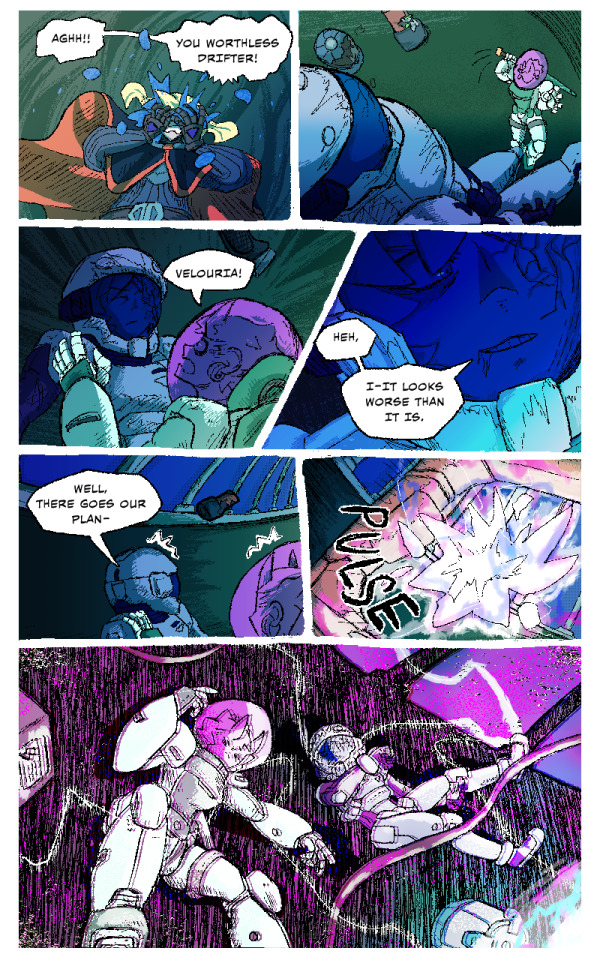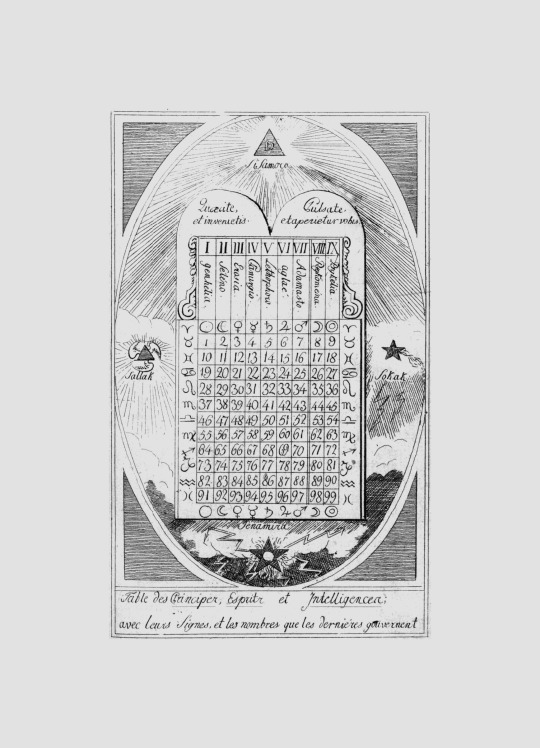#Zoroastrism
Text
PLEASE DONT VOTE IF YOUR RELIGION WAS IN PT 1
#religion#poll#Australia#New Zealand#China#humanism#jainist#Native American#pagan#shinto#Wicca#zoroastrism#religions#religious#indigenous#tumblr poll#polls
6 notes
·
View notes
Text
!Warning: topic = world ending event!
Regarding: space, folklore, modern government/religious systems
In detail: about the nuclear fusion reactor and it's potential impact for planetary collision.
Tought of and written by: Ward A. De Vos (online handle: wabsol)
Tbh I got quite the shock the time of valentine this year. I've never seen the planets so vibrant before, tho I must say I've never seen the planets anyways(except the moon).
Seeing the stars so bright after a super bright sun(january), the full moon and an orange planet(valentine) got me thinking. Aren't the stars meant to shine that bright during each advent(time before chirstmass)?
Had such an impact on me that I started thinking where the water particles go to if they pass by the moon. Theorised they might go to a-star *. Meaning some star that's behind Pluto. Thought about the path it takes and what would happen to our solar system now that the iter is being build in france.
iter(i earth or i tear when translated from french) is the first nuclear fusion reactor meant to run constantly. It get's hotter then the sun's core btw.
So now, what if, the water molucules push that star away from the earth and the sun also influences that star's path.
Would it not be hitting earth?
Don't even want to talk about the flag's of country's and how they look linked to eachother as a system like the snake Ouroboros. The fact that the Turkish red flag is the earth on it's side awaiting a star with five points like * Asterix(galia -now northern belgium where i'm from). Link that onto that gold orb with white halo and that cross or star on top. The pope or the queen of england has and you could just believe me for once again.
For fun you could try and translate my modern name to it's original meaning. Hint: use knowledge of vowels and history of language. "A means OS as in an ox btw"
#extinction#nuclear#fusion energy#astronomy#folklore#religion#government#flags#etymology#world history#gaulic#gaelic#appocalypse#zoroastrism#old testament#4 horsemen#vulgaris magistralis#normalis archivaris#perl#blackbeard#long john#Templar#jotunn#who gives a shit#grand canyon#weeping#zoro#over it#cursed#antoinette
0 notes
Text
youtube
youtube
youtube
youtube
2 notes
·
View notes
Photo

Mythologie dans la Perse antique
La mythologie de la Perse antique est née dans la région du Grand Iran qui regroupe le Caucase, l’Asie centrale, l’Asie du Sud et l’Asie de l’Est. À l’origine, les Perses étaient un peuple migrateur se considérant eux-mêmes comme des Aryens, dont le sens est «noble» ou «libre» et n’a aucun rapport avec la race.
Lire la suite...
6 notes
·
View notes
Text
Khordad Sal Khojeste Bad/Zayesh e Zartosht Mobarak, Happy (late-ish) Birthday to our prophet/seer Asho Zarathustra!
There is a historic mythology to his birth, where Zartosht or ‘Zoroaster’ laughed as an infant once he saw the joy of the good creation in all its splendour…
In the Preface of the Icelandic Edda Snorra Sturlusonar, Zarathustra is depicted as the infant whom oddly laughed before he cried at his birth; “Ok sá er fremstr var hét Zoroastres, hann hló fyrr en grét, er hann kom talem.”

“We find it stated that Zoroaster was the only human being who ever laughed on the same day on which he was born. We hear, too, that his brain pulsated so strongly that it repelled the hand when laid upon it, a presage of his future wisdom.”
(Naturalis Historia, VII.15)
May his joy act as inspiration as his Fravaši continues to do good, despite the faults of the world and humanity and the tribulations we all face…
Good thoughts, good words, and good deeds, there is only one path and it is the Truth/Order of The Divine’s love. :)
#zoroastrian#zoroastrianism#zarathustra#khordad sal#It was yesterday I just wasn’t online BECAUSE of it 😂😂
14 notes
·
View notes
Text
O extrem de scurta si hiper simplificata istorie a religiilor - că iar începe un război religios.
Prima etapa : oamenii trăiau in triburi mici, vânau si culegeau fructe. Si-au imaginat mulți zei - care arătau ca animalele pe care le vânau. Si aveau un vraci șaman in trib care se ocupa cu temele astea si era si un fel de doctor, ii trata de boli.
A doua etapa : începe agricultura. Apar zeițe feminine care simobilizau fertilitatea (a pământului, similară cu uterul femeii) si multe povesti despre ciclurile naturii / agricole (renașterea, iadul si raiul etc). Dar tot cu mulți zei era, fiecare se ocupa de ceva din viața oamenilor.
A treia etapa : apar societății mai avansate.
- Prima in actualul Iran (Mesopotamia). Si apare primul Dumnezeu unic - in Zoroastrism (1500-1200 îCh). Si următoarele concepte cheie : un singur Dumnezeu care a creat Universul, binele contra răului, ingeri si Diavoli, ziua judecății de apoi, așteptarea unui Mesia salvator.
- evreii ajung in Babilon (unde erau persanii care credeau in zoroastru) si preiau cam toate temele astea in Biblia Evreiasca (Tanakh, care include mare parte din Vechiul Testament). Asta s-a întâmplat gradual între 1000 îCh si 200 îCh
- Biblia creștina e scrisă in perioada 50-200 dCh. E o completare fata de vechiul testament - practic spune ca Iisus era Mesia din cartea precedentă. Si - ca sa convertească cât mai mulți care credeau in mulți zei - au inventat “Sfinții” ca sa te poți ruga la mulți, îți alegi tu pe cine placi. S-a răspândit in imperiul roman pentru ca era o societate avansată atunci.
- Islamul e scris in 600 si ceva. Nu spune ca Mohamed e fiul domnului dar e tot un fel de Mesia. E o versiune adaptata pentru arabii de atunci (recunoaște Dumnezeul evreilor si creștinilor, Ba chiar si pe Iisus ca profet).
- după religia creștina se sparge in câteva sub-categorii dar diferențele sunt super-minore. in anul 1000 si ceva ortodoxia se separa de catolicism (pentru ca Constantinopole devenise mai puternic si bogat decât Roma, după caderea imperiului roman de vest). Si in 1517 Luther lansează protestantismul (ca reacție contra bisericii din Roma - pentru ca era boom economic, se descoperise America, si nordul Europei devenea așa bogat si nu avea de ce sa accepte sa ramana sub sud).
Si aicea suntem. Evoluție reala zero de peste 500 de ani in vest, de peste 1000 de ani in estul europei / ortodoxie, de peste 1400 de ani la musulmani.
Problema e ca societatea a cam evoluat in sutele astea de ani. Ar fi nevoie de un update ceva. Care nu poate veni pentru ca bisericile sunt atât de bogate si puternice. Si atunci e haos - lumea sau se duce in negurile trecutului sau merge la psihologi, numerologi, crede in reptilieni, extratereștri, energii dacice si pământ plat. Ca par mai rezonabile chestiile astea decât texte atât de vechi.
>>Pe scurt ca sa Simplific la maxim - cam tot ce credem toti creștini musulmani evrei - e ce a scris Zoroastru acum 3000 de ani in actualul Iran. Adaptările sunt absolut minore - se schimba personajele si decorul si costumele cam atât. Devine complex dacă includem in poveste si Asia depărtată. Schimburile culturale erau foarte reduse acum 2000-3000 de ani deci acolo evoluția a fost separată.
Oamenii marea masa are nevoie de așa ceva, e important pentru menținerea speranței unei vieți de apoi si niște reguli comune de conviețuire.
Va recomand cartea asta sa vedeți câte “Evoluții” a avut conceptul de Dumnezeu in textele sfinte. Sunt nu știu câte versiuni fiecare făcută de aia in funcție de situația lor economică / politica / militară etc. Sunt nu știu câți “Dumnezeu” in funcție de ce vroiau sau își imaginau oamenii atunci. (Karen Amstrong, A history of God)
Eu am o mare problema cu religiile organizate si cu cărțile “sfinte”. Va zic sincer. Chit ca NU sunt ateu.
Dar totuși in Bib_lie Dumnezeu s-a enervat si a om-or-ât sau aproape pe toată lumea (potopul) sau orase intregi (sodoma si gomora). Dar ne iubește ! Dar - dacă cumva nu ești perfect si nu respecti fix tot ce scrie in carte - te condamna la o eternitate de stat in lavă în iad. Dar ne iubeste. Mda.
In Co_ran tot așa - il cearta pe Mohamed ca i-a lăsat in pace pe niște prizonieri de război si ca nu i-a om-o-rât pe toti. Si mai zice acolo ca dacă Luptătorii au sclave sau prizoniere de război, pot sa le facă orice ca sa înțelegeți voi, le dă voie. negru pe alb. Dar e bun, tolerant, iubitor de oameni. Sigur ca da.
Astea sunt cărți scrise DE OAMENI. Ok? De oameni. Nu de Dumnezeu. Cuvinte pe niste foi. Scrise de unii cu stiloul sau ce aveau. Acum enorm de mult timp, in timpuri TOTAL diferite de azi.
2 notes
·
View notes
Text
Råkar någon veta om det finns en uppteckning av skandinaviskt resandefolks religion någonstans? Av det referat som Wikipedia länkar till låter det som en folkversion av Zoroastrism, möjligen med vissa hinduiska element, eller bara separering över hundratals år från andra zoroastier och adaptioner till nordiska förhållanden där den måste praktiseras i hemlighet. Men jag kan väldigt lite om den religionen (det enda jag vet är dualism och elddyrkan, ungefär), så vem vet - det kan ju också vara en förvrängd icke-trinitär form av kristendomen, där Gud Fader ges namnet Delekh och Gud Sonen namnet Alokh, och en upphöjd Djävul får namnet Beng (vilket förövrigt tydligen är roten till Bäng i betydelsen Så in i bäng), men det känns mer otroligt för mig - jag tror att Jesus skulle ha kommits ihåg i så fall. Vore kul att gräva lite i, om någon har gjort det.
2 notes
·
View notes
Text





Pages 16-20!
As much as I love drawing mechanical things in general, the interior shots of Zoroastre's cockpit took me forever lmao. I have no idea how the artists for Gundam do it.
9 notes
·
View notes
Photo

From “Téléscope de Zoroastre, ou clef de la grande cabale divinatoire des mages” c. 1796
10 notes
·
View notes
Text
Ver "Rameau: Zoroastre - Air en Chaconne" en YouTube
youtube
2 notes
·
View notes
Video
youtube
Zoroastre, RCT 62: Ouverture
2 notes
·
View notes
Text
The three great Iranian divinities Ahura Mazdā, Miθra, and Anāhitā appear in Achaemenid inscriptions starting from the reign of Artaxerxes II (404-359 B.C.). As regards Anāhitā, we know from Berossus, quoted by Clement of Alexandria (C. Clemen, Fontes historiae religionis persicae, Bonn, 1920, p. 67), that it was Artaxerxes II himself who ordered images of Aphrodite Anaitis to be set up throughout his vast territories—in Babylon, Susa, Ecbatana, Persepolis, Bactra, Damascus, and Sardis—and who spread the worship of his new goddess. According to Herodotus (1.131) it was the “Assyrian” and “Arabian” influence which was supposed to have led to the spreading of the cult of Aphrodite Urania among the Persians. All this evidence points to Mesopotamian influence on the cult of Anāhitā, and it is probable that the Assyrian Ištar and the Elamite Nanā were forerunners of the Iranian goddess (cf. G. Gnoli, “Politica religiosa,” pp. 31ff.) since her complex nature can not be explained from an Indo-Iranian viewpoint alone. It is for this reason that Boyce (op. cit., chaps. 2, 12, 13) proposes that we should recognize in this goddess as she appears in late-Achaemenid, Parthian, and Sasanian times the result of an identification of a Western Iranian divinity *Anāhiti strongly influenced by the Elamite and Mesopotamian goddess, and the Avestan *Harahvaitī Arədvī Sūrā Anāhitā. According to this hypothesis, the Babylonian influence would account for the strengthening of a cult which did not conform to orthodox Zoroastrianism, for the anthropomorphism, and for the founding of temples with divine images which were later to be countered by the spreading of the temple-cult of fire (M. Boyce, “Iconoclasm among the Zoroastrians,” in Studies for Morton Smith at Sixty, ed. J. Neusner, Leiden, 1975, pp. 93-111).
Similarly Ahura Mazdā and Miθra were probably identified with Marduk, the principal god of Babylon, and Šamaš, the solar divinity, respectively (see Gnoli, “Politica religiosa,” pp. 29f., 37f., 44 and Boyce, Zoroastrianism II, pp. 28f.); in the Babylonian calendar the seventh month was dedicated to Šamaš, in the Iranian calendar it was dedicated to Miθra (see Gnoli, “Sol Persice,” pp. 734ff.).
Kingship. The special relationship that Ahura Mazdā, Miθra, and Anāhitā had with kingship is demonstrated by the appearance of their names in the royal inscriptions of the Achaemenids as well as by other evidence (see Gnoli, “Politica religiosa,” pp. 31-43). It is probable that this relationship reflected Mesopotamian beliefs and customs, especially in the case of Marduk and Ištar (and her various namesakes). Moreover, the formula used in the Old Persian inscriptions to express the idea of the divine investiture of the king of kings, vašnā Ahuramazdāha “by the will of Ahura Mazdā” is quite probably of Mesopotamian inspiration (cf. Gnoli, De Zoroastre à Mani, p. 63 and n. 39). In it is contained the idea of the sovereign being elected by the supreme god, an idea which is similar to the Assyro-Babylonian concept of kingship but unlike the Avestan idea of the kavi who ruled by virtue of his xᵛarənah. The Achaemenid concept had to be adapted to the reality of a universal empire and an absolute monarchy, while the Avestan one perpetuated traditions proper to an essentially tribal, patriarchal, and pastoral society (see Gnoli, “Politica religiosa,” pp. 72ff.).
https://www.iranicaonline.org/articles/babylonia-ii
1 note
·
View note
Text
Au Museum d'Histoire Naturelle
Le ministre des armées
Israélien chemise noire
Empire romain Mussolinen
Qualifie les Gazaouis d'animaux
Ferme des Animaux
Lui misant sur la technologie
Il a en horreur com d'extrême-droite les Lions
Donc Friedrich c Nietzsche
On l'extirpe des fachos
Lion avec les dents
Iran Zoroastre en Belzeba
Peut parler avec les astres
Ange spatiale
Et puis les Aryens bruns guerriers
Avec eux ça ne passe plus un mauvais Divin
Un vent d'Abraham
Pour aider une diaspora juive
Il est passé par là
Mardi 10 octobre 2023
0 notes
Photo

Zoroastre
Zoroastre (également appelé Zarathoustra, vers 1500-1000 av. J.-C.) était le prêtre perse devenu prophète qui fonda la religion du zoroastrisme (également appelée Mazdayasna "dévotion à Mazda"), la première religion monothéiste au monde, dont les préceptes allaient influencer les religions ultérieures.
Lire la suite...
1 note
·
View note
Text
youtube
Johann Adolf Hasse (1699-1783) - Miserere in D Minor: I. Miserere ·
Savitri de Rochefort ·
Ensemble Zoroastre · Thierry Escaich ·
0 notes
Video
youtube
L'être et l'Être
« Pour comprendre ce qu'est l'être, débris de l'Être, il faut considérer que l'Être est immortel, tandis que l'être meurt après quelques décennies de vie d'illusions, notamment d'illusion sur son existentialité et sa durabilité. (…) Mort, l'être peut se survivre par l'âme. L'être ne durera indéfiniment que s'il s'est donné, par l'amour durant sa vie terrestre, la capacité de retour vers l'Être-racine : l'Un, l'Amour, la Vie. (…) Ici bas on ne peut rien percevoir par les sens du rapport entre être et Être. Seul l'œil métaphysique le perçoit ». Michel Potay Extrait de l’entrée 234 suivante :https://michelpotayblog.net/234.html/234Etre-NePasEtre-comments-french.htmlTexte intégralPour comprendre ce qu'est l'être, débris de l'Être, il faut considérer que l'Être est immortel, tandis que l'être meurt après quelques décennies de vie d'illusions, notamment d'illusion sur son existentialité et sa durabilité.
La femme qui porte les organes de la genèse humaine est la fleur de la courte vie terrestre ; l'homme pollinise de fleur en fleur. Une fois mort, l'être peut se survivre par l'âme, mais il n'a plus de cerveau, plus de sexe. Seule la Miséricorde le fait durer. L'être ne durera indéfiniment que s'il s'est donné, par l'amour durant sa vie terrestre, la capacité de retour vers l'Être-racine : l'Un, l'Amour, la Vie (Rév d'Arès 24/3-5). Abraham, Zoroastre, Moïse, Bouddha, Jésus, Mouhamad, etc. sont possiblement des êtres fondus ou en cours de fusion dans l'Être.
Notons qu'ici bas on ne peut rien percevoir par les sens du rapport entre être et Être. Seul l'œil métaphysique le perçoit. Ciel étoiles montagne Vidéo par eberhard grossgasteiger de PexelsBalancoire Vidéo par INNORECORDS PhotoVidéos de Pexelsideo by Haakon Birkeli from Pexels
0 notes